
What’s the best time to travel to Japan?
Every season is unique
Japan is a fascinating destination year-round, but each season offers completely different experiences.
If you’re planning a trip to Japan, choosing the right time can make a big difference in your experience. Here we explain the characteristics of each season so you can decide which is the best time to travel to Japan.
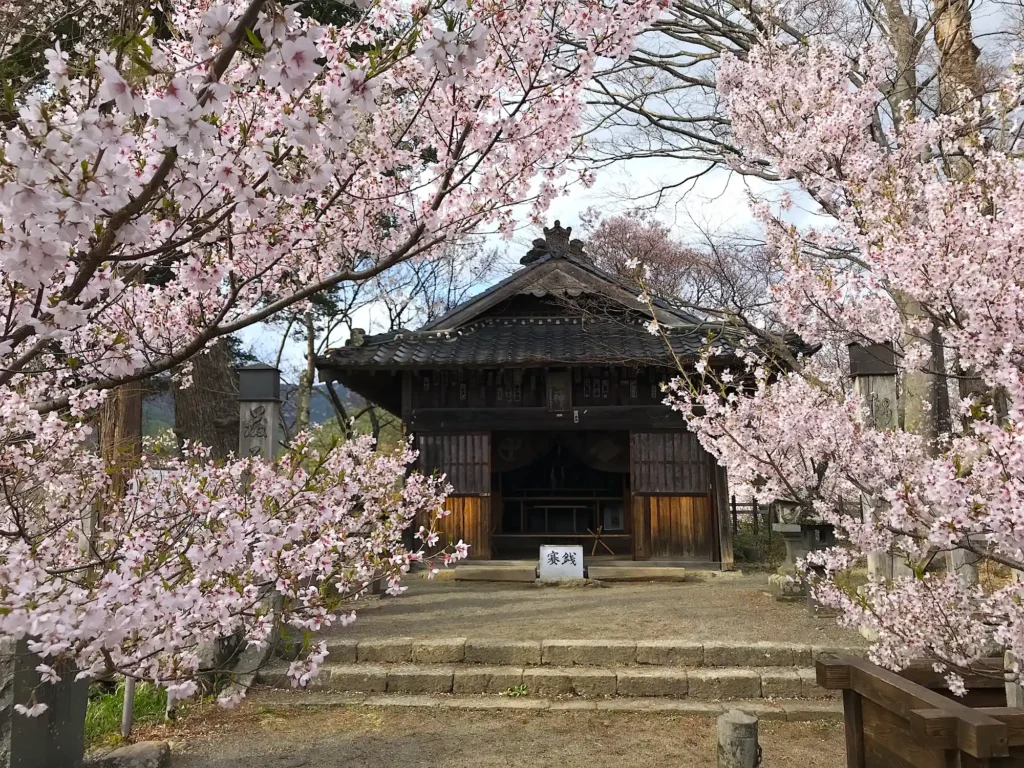
Spring (March to May): Cherry blossom season
Spring is perhaps the most popular season to visit Japan, and for good reason. Between late March and early April, the country transforms with the arrival of sakura (さくら) or cherry blossoms, creating dreamlike landscapes in parks, temples, and streets.
Hanami (花見) or cherry blossom viewing is something unparalleled in Japan. The abundance of cherry trees throughout the country is impressive, both in rural areas, urban gardens, and city centers. Entire avenues are lined with rows of cherry trees, and ordinary corners that go unnoticed throughout the year are illuminated by the light of strategically placed cherry trees during this season.
It’s also a time for picnics in parks and green spaces. To enjoy the cherry blossom spectacle, everyone meets with friends and family for outdoor picnics to spend time together. A blanket, food, and drinks are enough to spend a wonderful afternoon outdoors.
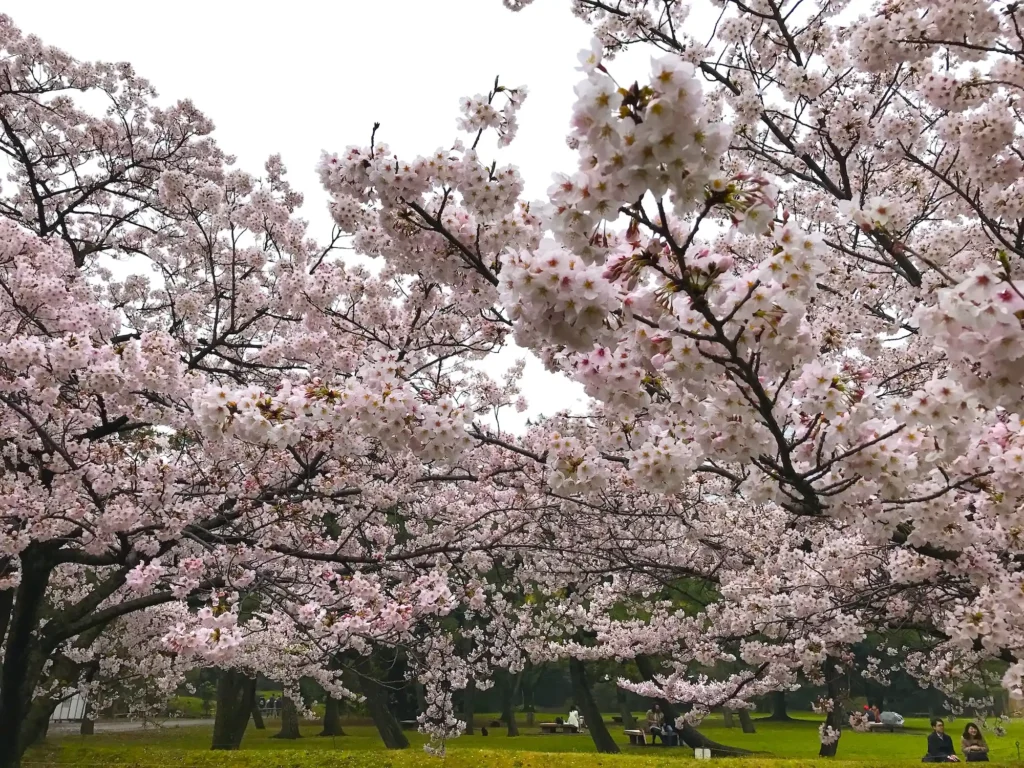
Advantages of visiting Japan in Spring:
- Cherry blossoms in Japan are a once-in-a-lifetime experience.
- Pleasant temperatures between 10°C and 20°C.
- Longer, sunnier days.
- Spring festivals throughout the country, streets come alive.
- It’s easy to interact with Japanese people if you picnic in a park; a festive and joyful atmosphere pervades wherever you go.
Spring is ideal for photography enthusiasts, those interested in traditional Japanese culture, and those who don’t mind crowds.
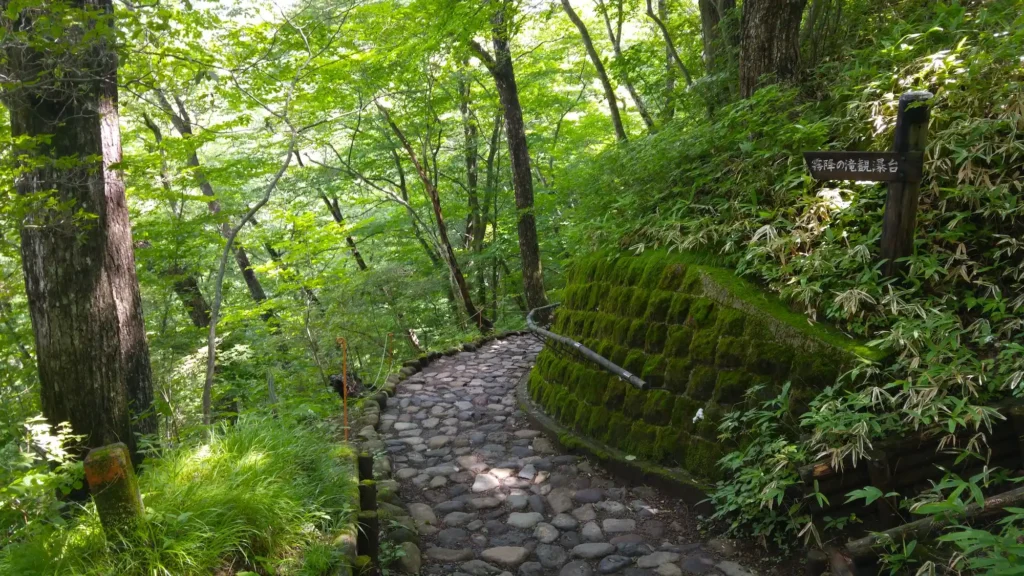
Summer (June to August): Festivals and outdoor activities
Japanese summer is hot and humid, but it’s also the season of vibrant festivals or matsuri (祭り) celebrated throughout the country. Matsuri are celebrations of seasonal changes, events, and expressions of gratitude to deities and ancestors. Shinto, Buddhist, and secular matsuri coexist depending on the occasion.
Matsuri typically feature one or more processions where participants wear traditional clothing while drums and traditional instruments play, and the air vibrates with celebration.
They are energetic celebrations where you can enjoy traditional local culture and aesthetics in the streets.
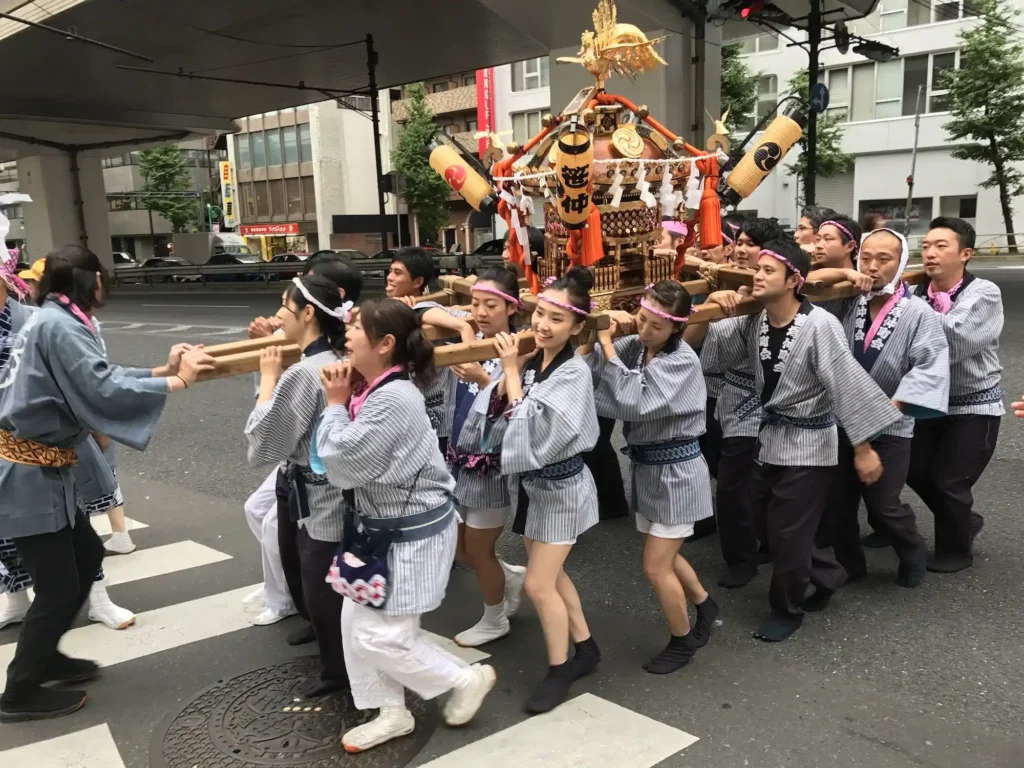
On July 7, Tanabata (七夕), also known as the “Star Festival” (星祭り), is celebrated. Cities are filled with colorful banners, and everyone writes their wishes on paper strips called Tanzaku (短冊) which are hung on bamboo trees.
From August 13-16, Obon (お盆) or the festival of the dead takes place, one of the most important moments in the Japanese festive calendar. It is, in fact, the great summer festival, with many vacation trips within the country and numerous rituals remembering and venerating ancestors.
Throughout Obon, several rituals occur that showcase the delicacy of Japanese traditions. It begins with welcome fires for spirits, fires to guide their souls, and cleaning family tombs. Activities include Toro Nagashi (灯籠流し), which involves releasing floating paper lanterns in honor of ancestors.
It’s common for Bon Odori (盆踊り) dances to be held in the streets at dusk and night, cheerful dances that everyone attends with friends and family wearing Yukatas, simple, elegant, and cool traditional garments ideal for summer.
During summer, night markets with street food are abundant throughout the country, as well as music festivals like the Sumida Jazz Festival in Tokyo, with dozens of bands playing simultaneously in different areas of the city in parks, avenues, and venues.
Advantages of visiting Japan in Summer
- Numerous traditional festivals with fireworks, parades, and cultural events.
- Ideal for visiting mountainous regions like the Japanese Alps or Hokkaido, with pleasant weather at this time of year.
- Possibility to climb Mount Fuji (the official climbing season is July to September), but remember it’s an ascent that requires being very fit and isn’t without danger.
- Cultural events – Greater range of outdoor activities and special exhibitions
- Lush nature: intense green landscapes and blooming hydrangeas and hibiscus.
- Perfect for water activities in Okinawa and other southern islands.
- Very lively atmosphere in open spaces and many nightlife areas.
Recommended for travelers who enjoy the outdoors, cultural festival enthusiasts, and those who don’t mind heat and humidity.
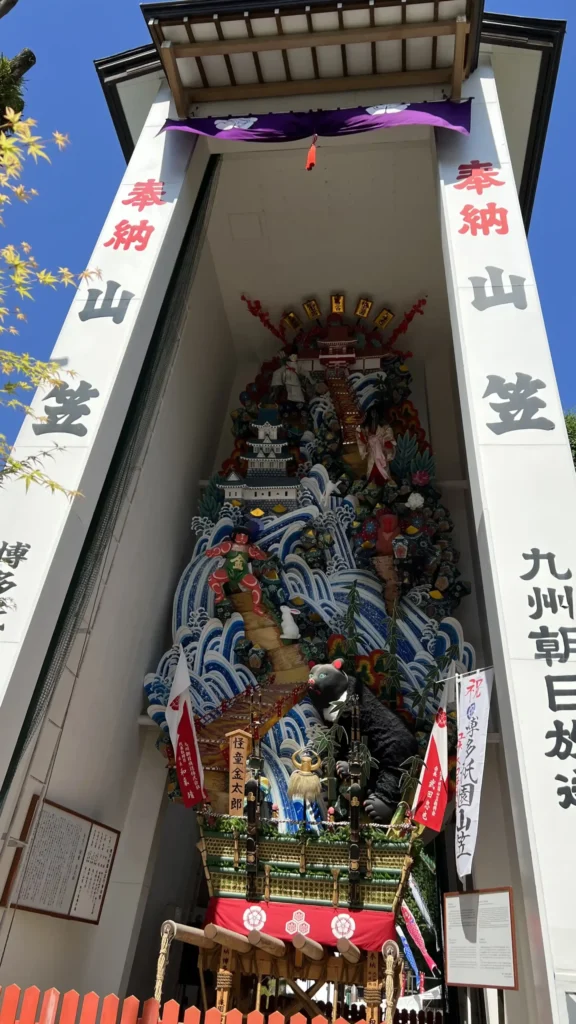
Fukuoka
Japan
Kanazawa
Japan

Autumn (September to November): The momiji spectacle
Japanese autumn is considered by many to be the most beautiful season after spring, thanks to the display of colors offered by the momiji (紅葉) maple leaves.
Momiji has a very important cultural significance in Japan, associated with the ephemeral beauty of nature and the impermanence of life. If in spring cities turn white and pink, illuminating rural and urban landscapes, during autumn Japan turns vibrant ochre and red. A beautiful visual spectacle due to the dense vegetation and trees wherever you go throughout the country.
The delicacy of gardens and temples is showcased in autumn. Wandering through them becomes a pleasant and very relaxing experience. It’s romantic and invites introspection and calm.
Advantages of visiting Japan in Autumn:
- Spectacular landscapes with red, orange, and golden hues.
- Pleasant climate with temperatures between 10°C and 25°C.
- Fewer tourists than in spring.
- Excellent seasonal cuisine (mushrooms, chestnuts, sweet potatoes).
Recommended for nature lovers, photographers, food enthusiasts, and those who prefer moderate temperatures.
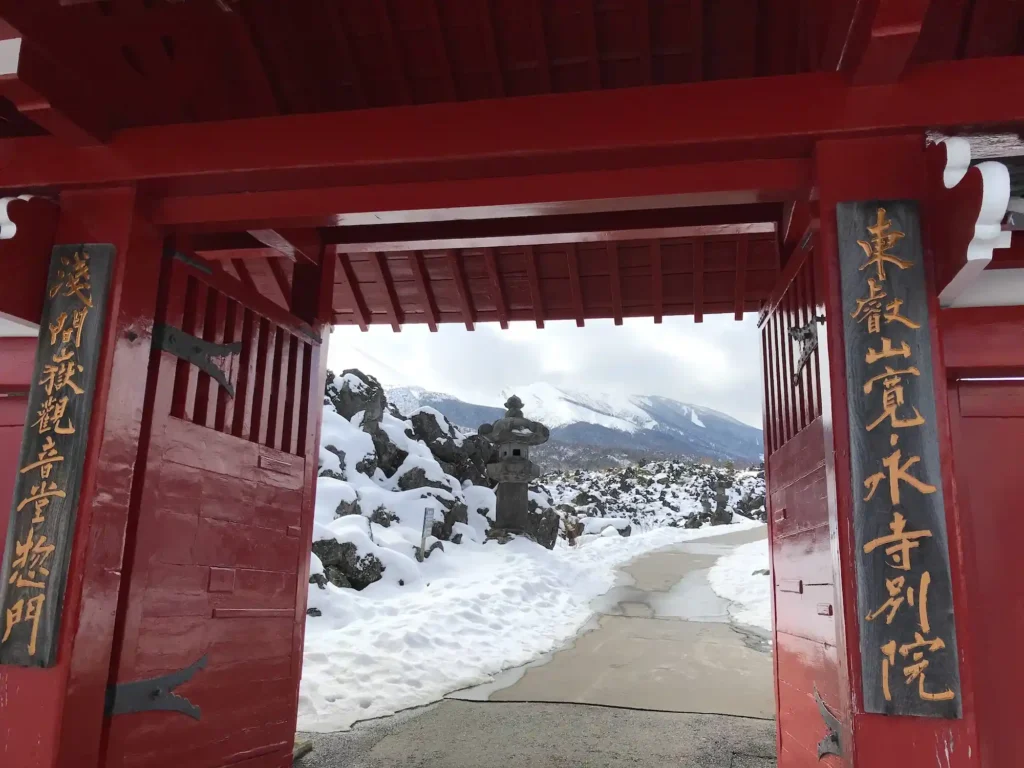
Winter (December to February): Snow, onsen, and fewer tourists
Japanese winter can be cold but offers unique experiences such as snowy landscapes, hot springs (onsen), and fewer tourists.
Snowy landscapes transform places like Hokkaido, the Japanese Alps, and traditional villages into postcard-worthy scenes, with centuries-old temples covered in snow and zen gardens acquiring a unique serenity.
This season sees a notable decrease in tourists, allowing you to enjoy popular attractions without crowds and experience a more authentic and quiet Japan.
Japanese winter cuisine is a great reason to choose this season to visit the country. Rich in comforting dishes like oden, nabemono (hot pots), and an infinity of varieties of steaming ramen.
Natural hot springs (onsen) reach their peak splendor, offering a relaxing experience in winter while contemplating the snowy landscape.
Additionally, this season brings impressive spectacles such as Christmas illuminations in major cities, snow festivals like the famous Sapporo Festival, and the possibility of practicing winter sports at world-class ski resorts with exceptional quality powder snow.
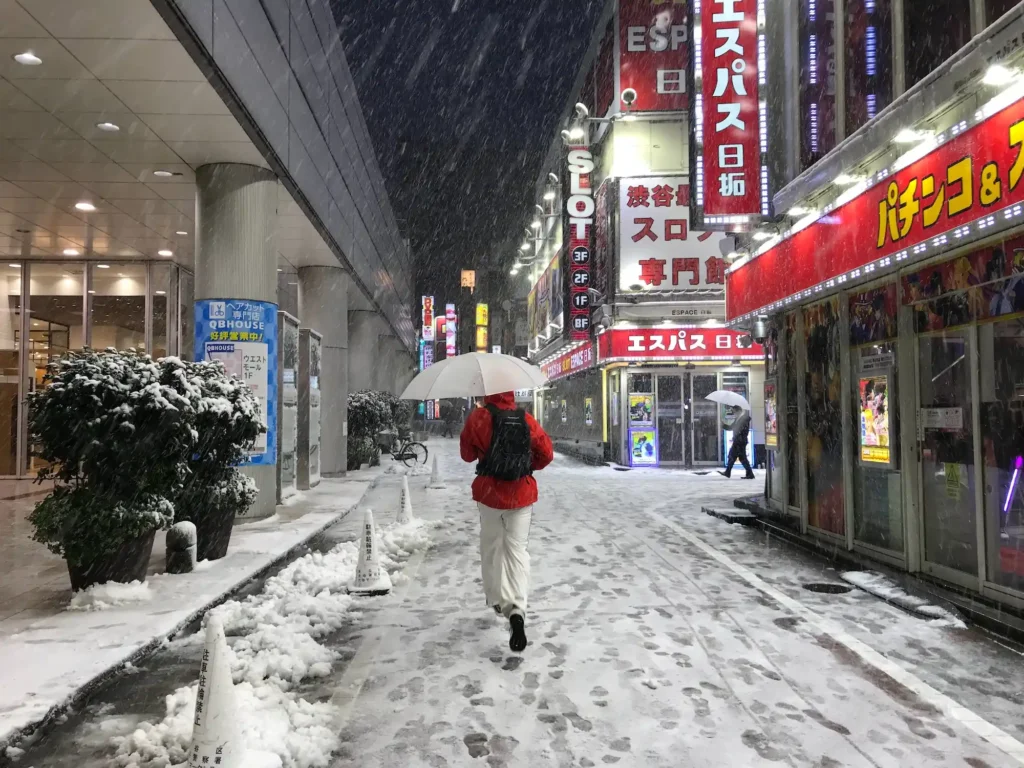
Accommodation and flight prices tend to be more economical outside of high season, especially between January and February, making this season an ideal opportunity to experience the winter facet of Japanese culture.
Advantages of visiting Japan in Winter:
- Beautiful snowy landscapes, especially in the north and Japanese Alps.
- Experience outdoor hot springs surrounded by snow.
- Lower prices for accommodations and flights (except during New Year).
- Excellent conditions for winter sports, with world-class ski resorts.
- Spectacular illuminations in major cities during the Christmas season.
Recommended for skiers and winter sports enthusiasts, winter photography fans, people interested in hot spring experiences, and those who prefer to avoid crowds.
Climate by region
Japan is an elongated country from north to south, so the climate varies significantly depending on the region you visit:
Hokkaido (north)
Hokkaido, Japan’s northernmost island, presents a markedly contrasted climate throughout the year, characterized by long, extremely cold winters with heavy snowfall that transform the region into a white paradise, ideal for winter sports enthusiasts and snowy landscapes. In contrast, its summers, although relatively short, offer pleasant temperatures and significantly lower humidity than the rest of the Japanese archipelago, providing a perfect refuge for those looking to escape the stifling heat of the south.
Travelers interested in enjoying Hokkaido’s lush nature will find the period between July and September optimal for exploring its national parks, lakes, and flower fields, while those attracted by pristine snow and excellent skiing conditions should consider visiting the island during the months of December to March, when Hokkaido displays all its winter splendor.
Honshu (central, including Tokyo and Kyoto)
Honshu, Japan’s main and most populated island where emblematic cities like Tokyo and Kyoto are located, exhibits a climatic rhythm of four clearly demarcated seasons that define the visitor’s experience throughout the year.
Its summers are characterized by high temperatures accompanied by considerable humidity that can be stifling, especially in July and August, while its winters, although moderately cold, rarely reach severe extremes in central urban areas, although mountainous regions and coastal areas of the Sea of Japan do experience significant snowfall.
Travel experts and locals agree in recommending intermediate seasons as the ideal periods to visit this region: spring (March to May), when cherry blossoms transform the landscape, and autumn (October to November), when the chromatic spectacle of reddish maples bathes forests and gardens, both seasons offering mild temperatures, less precipitation, and optimal conditions to enjoy both the natural and cultural wonders that Honshu has to offer.
Okinawa and southern Japan
Okinawa and the southern regions of Japan enjoy a privileged subtropical climate that maintains warm and pleasant temperatures throughout the annual cycle, creating a marked contrast with the rest of the Japanese archipelago and offering an idyllic destination for lovers of sun and crystal-clear beaches.
However, this area faces a notable rainy season and cyclonic phenomena between May and October, a period during which typhoons can significantly affect tourist activities and mobility in the region, with intense precipitation alternating with days of humid heat.
For this reason, both experienced travelers and meteorologists usually recommend planning visits between November and May, months that constitute the optimal climate window to explore its coral reefs, immerse yourself in its unique local culture, resulting from both Japanese and Southeast Asian influences, and enjoy its paradisiacal beaches under clear skies and with less risk of severe weather interruptions.
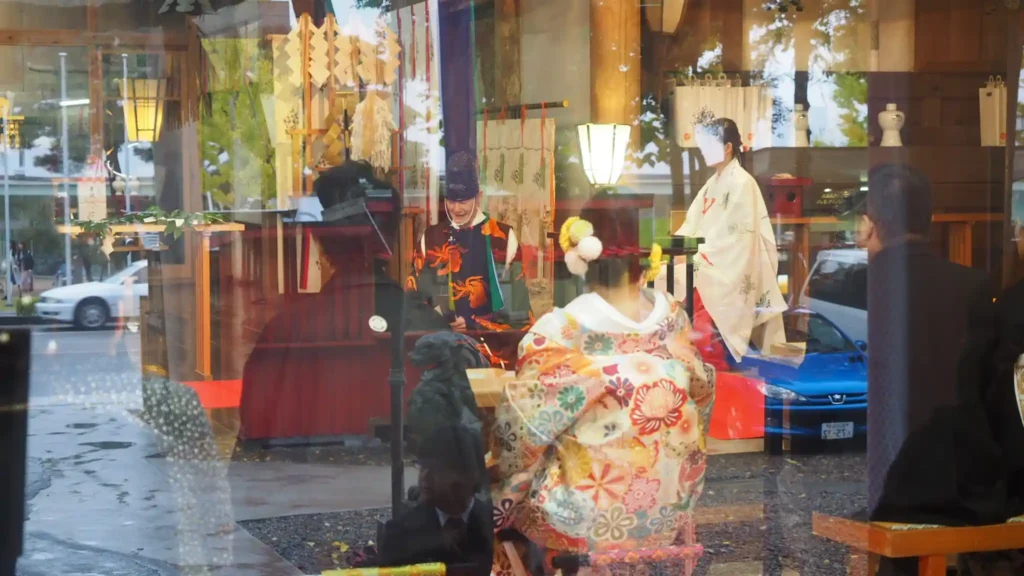
Calendars of unmissable festivals and events
Spring
- Cherry Blossom Festival (March-April, nationwide).
- Golden Week (late April-early May).
- Sanja Matsuri in Tokyo (May).
Summer
- Gion Matsuri in Kyoto (July).
- Sumida River Fireworks Festival in Tokyo (July).
- Obon (mid-August).
- Awa Odori Festival in Tokushima (August).
Autumn
- Jidai Matsuri Festival in Kyoto (October).
- Maple leaf illumination in Kyoto temples (November).
- Autumn Leaves Festival (October-November).
Winter
- Christmas illuminations (December).
- Japanese New Year (January 1).
- Sapporo Snow Festival (February).
- Ice lantern festivals in Hokkaido (February).
What is the best time to visit Japan?
If we had to choose an ideal time to visit Japan for the first time, we would recommend:
- Mid-October to November: The weather is pleasant, autumn landscapes are spectacular, and there are fewer tourists than in spring.
- Late March to early April: If you can deal with crowds, cherry blossom season is a unique experience worth experiencing at least once.
- May: After Golden Week, it offers good weather and fewer tourists before the arrival of the rainy season.
The best time will depend on your personal interests, your tolerance for different weather conditions, and the type of experiences you’re looking for on your trip to Japan.
Practical tips
- Book in advance: Especially if traveling during cherry blossom season, Golden Week (late April to early May), or New Year.
- Prepare for the weather: Japan can be extremely hot and humid in summer, so bring light, breathable clothing. In winter, especially in the north, you’ll need thermal clothing and appropriate coats.
- Consider a regional itinerary: If you have enough time, you can combine different regions according to the season (for example, Hokkaido in summer and Okinawa in winter).
Whether you’re seeking the tranquility of a snow-covered garden, the explosion of color from cherry blossoms, the excitement of a summer festival, or the warm tones of autumn, Japan offers unique experiences throughout the year.
Choose the season that best suits your preferences and prepare for an unforgettable trip to the Land of the Rising Sun!
Still have questions? Here are some of the experiences you can enjoy in Japan:
- Discover hundreds of ways to prepare ramen.
- Immerse yourself in hot springs surrounded by nature.
- Trekking and rafting in Okutama.
- Sleeping on a tatami mat in a centuries-old temple.
